The Ecology Action Centre (EAC) advocates for fishing policies and practices that minimize harmful impacts on the marine ecosystem while benefiting local communities. Fishers, scientists, and marine conservationists agree that habitat destruction and overfishing are two of the greatest threats to our marine ecosystem. You can't have fisheries without fish.
We strive toward the recovery of depleted species and the protection of habitat. We also advocate for fisheries regulation and management that allow for the long-term, sustainable harvest of commercial species without putting them, or those whose livelihoods and culture depend on them, at risk. We support Indigenous Treaty rights to fish, and their inherent right to self-governance. We advocate for national and international fisheries policies and regulations that are science-based, transparent and enforceable, informed by Indigenous and local knowledge. In all of this work, we are guided by a precautionary approach, which considers the entire ecosystem when making management decisions. Our ethos is that how we fish matters and who fishes matters as well.
Herring & Mackerel: Little Fish, Big Impact
Herring & Mackerel: Little Fish, Big Impact

Atlantic mackerel (Scomber scombrus) and Atlantic herring (Clupea harengus) are small pelagic fish found in large schools throughout waters in Atlantic Canada. They play a critical role in the ocean’s food web and are eaten by many species including tuna, sharks, sea birds, and whales. Indigenous Peoples have fished the abundant mackerel for millennia in this region and continue to do so for food, cultural, and economic value. These tiny fish support several commercial fleets in Atlantic Canada and are fished for canning; fish oil and meal; and, in large part, to be sold as bait for use in other fisheries. For example, lobster fishing, which is the economic backbone of many of our coastal communities, relies heavily on mackerel and herring for bait.
Unfortunately, decades of commercial exploitation of Atlantic mackerel and Atlantic herring have had an impact. This, combined with increasing variability in ocean temperatures, currents, food availability, and predators, has left several populations of these important species at critically depleted levels. The status of the Atlantic mackerel stock has been in the critical zone since 2010 and continues to decline. Herring populations are at some of their lowest historical levels. Both spring spawning herring in the southern Gulf of St. Lawrence and southwest Nova Scotia Bay of Fundy herring are also in a state of critical depletion.
In 2016, the EAC launched a campaign to stop overfishing and focus on rebuilding critical populations. We have advocated for the uptake of recommendations aimed at improving management of forage fish in Canada through our participation in official fishery advisory committees, science assessments, rebuilding plan working groups, and discussion with industry and decision makers. You can read more about our recommendations to decision makers in three recent letters here, here and here.
In 2022, after years of inaction to halt decline, the commercial Atlantic mackerel fishery was closed along with herring fisheries in the southern Gulf of St. Lawrence. Other quotas for herring have been substantially reduced. This will impact thousands of coastal communities and fishers across Atlantic Canada and Quebec and was undoubtedly a difficult decision to make. The reality is, however, that these closures have been long overdue. Risky management decisions by government in the past have only prolonged the decline and associated economic impacts. At this point, the only course of action remaining for effective rebuilding is closure. We hope the closures will allow populations to rebuild in a relatively short time. In the interim, we call on the Canadian government to focus on the thousands of people across Atlantic Canada and Quebec that will experience financial hardship because of these closures.
Mackerel as traditional food and recreation fish
Aside from its commercial and ecosystem importance, Atlantic mackerel is one of the few remaining marine fish that Atlantic Canadians can fish recreationally from shore. They can do this for food or sport without having to own a commercial fishing licence. Thousands of people fish for mackerel on wharves throughout Atlantic Canada on an annual basis.
For two years, the EAC visited local wharves to interview fishers and count fish, in an effort to understand the importance of recreational mackerel fishing. We were also seeking to understand when, where, and how intensive recreational fishing was taking place in Nova Scotia. We found that the recreational fishery was very important to people as a source of food and bait. Many recreational fishers were a wealth of knowledge, having fished and observed changes at the same fishing spot for many years. Most were also in support of some regulation on recreational fishing, knowing that mackerel are declining. We welcome new regulations for recreational fishing announced by the Canadian government in 2021 that still allow public access to this important food source.
You can read our report, What’s Happening at the Wharf? to learn more about our findings and the importance of mackerel as a recreation fish.
Sharks of the North Atlantic
Sharks of the North Atlantic
Globally, many sharks and rays are at risk of extinction due to overfishing, through targeted or incidental catch with few limits. Canada is home to 56 species of sharks, skates, and rays (collectively known as elasmobranchs), many of which lack protection in the form of a management plan designed to ensure sustainable catch. The EAC works to understand the threats to sharks in the North Atlantic, with a focus on those species that are most impacted by Canadian fisheries. We advocate for strong management, limits on catch, proper data collection, and compliance monitoring through our participation on domestic advisory committees and on international delegations to fishery negotiations.
Because many of the shark species in Canada are highly migratory, we work with organizations throughout the Atlantic Ocean and Mediterranean Sea to protect and manage sharks. We are founding partners in the Shark League for the Atlantic and Mediterranean, which aims to secure catch limits based on scientific advice, strict protections for endangered species, and strong, enforceable bans on shark finning. We advocate for these policies at Regional Fisheries Management Organizations (RFMOs), like the International Commission for the Conservation of Atlantic Tunas (ICCAT) and the Northwest Atlantic Fisheries Organization (NAFO). These RFMOs make the rules that Canadian fleets have to follow. We work to ensure action is taken at the national level.

Blue sharks (Prionace glauca), like our spokes-shark Hector, are the most wide-ranging of all shark species and are the most common sharks found in Canadian waters. Our work on shark management and protection began with a focus on the high numbers of sharks caught -- with no limit -- in Canada’s surface longline fishery for swordfish and tuna. For every swordfish, approximately four to five sharks are hooked as well. That is approximately 100,000 blue sharks annually. About 35 per cent of these die after being thrown back into the ocean. Canada does not have proper catch limits for blue sharks.
Blue sharks are highly migratory and have been tracked crossing the entire Atlantic Ocean. Despite being the most common species in Canadian waters, blue sharks are in need of precautionary management. They are assessed as ‘Near Threatened’ by the International Union for the Conservation of Nature (IUCN) and were listed as ‘Special Concern’ by the Committee on the Status of Wildlife in Canada (COSEWIC). These listings should be taken as warnings. We believe that prevention is better than generations of negotiating ‘rebuilding plans’ for yet another species.
The EAC has helped secure an overall cap on blue shark catch for all countries fishing in the North Atlantic (including Canada), but this has yet to be enforced or broken down by country allocation. We advocate for Canada to enforce a domestic catch limit and to push for international allocation.

Shortfin mako sharks (Isurus oxyrhinchus) also migrate to feed in Atlantic Canadian waters. They are thought to be the fastest species of shark, capable of swimming up to 35 kilometers per hour, and can even leap from the water! Unfortunately, this valuable shark is now exceptionally depleted due to decades of overfishing by fleets across the North Atlantic. For years, scientific advice has been clear that a complete ban on retaining caught mako sharks throughout the region is necessary for the population to rebuild. Even with this ban in place, recovery is expected to take upwards of 50 years.
We tirelessly advocated for this advice to be acted upon in Canadian waters, and in 2020 Canada became the first North Atlantic country to introduce a domestic ban on landing (or catching and bringing to port) mako sharks. We now work closely with the Canadian government and our international Shark League partners to secure the needed international ban at ICCAT, the official organization responsible for management of tuna and tuna-like species including shortfin mako sharks in the Atlantic Ocean.
In 2021, after a hard-fought negotiation, ICCAT countries agreed to ban retention of all shortfin makos in the North Atlantic in the 2022 and 2023 fishing seasons. However, the European Union – which has long taken the lion’s share of mako catch – insisted on including complicated language that leaves a door open to resume landings after only this short reprieve. The United States, meanwhile, also continues to push for an option to land makos alive. Along with our partners, we continue to advocate for closure of these loopholes. We will be working with Canada’s delegation at ICCAT negotiations to ensure a full rebuilding plan is adopted and no landings are resumed before recovery begins.
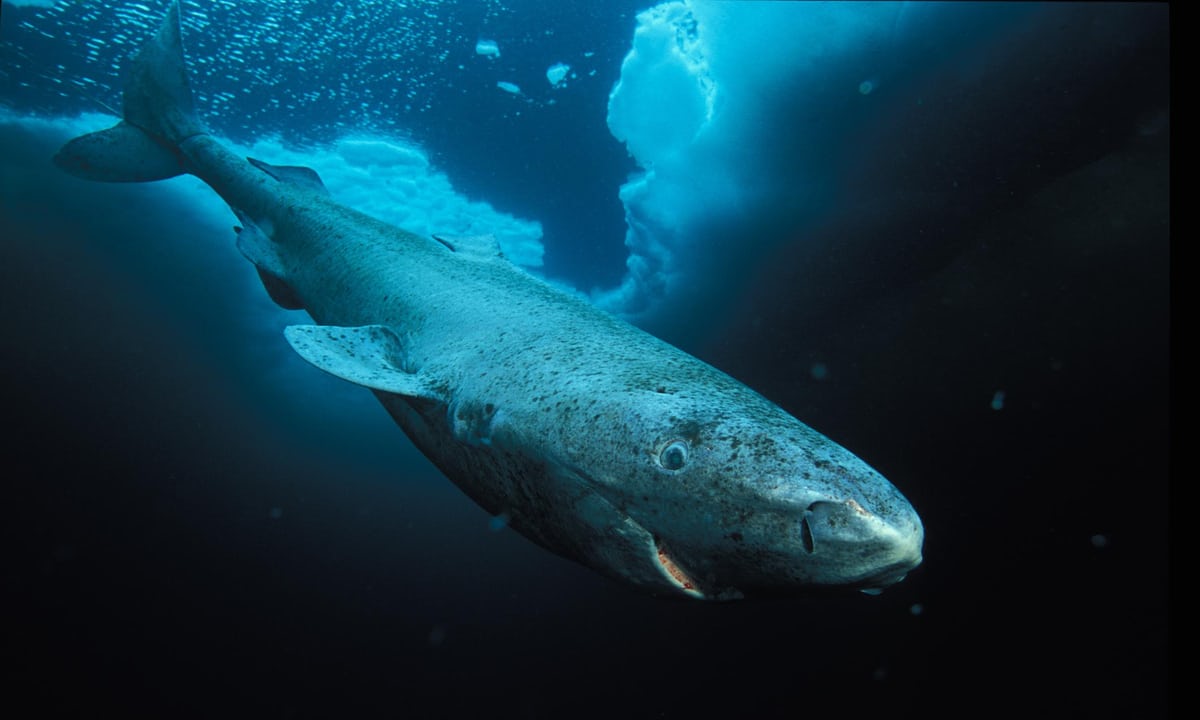
Greenland sharks (Somniosus microcephalus) are the longest-lived vertebrates on earth, with estimates suggesting that they could live to 400 years old, making them especially vulnerable. Canada is lucky to be home to populations of this amazing animal in our Arctic waters and all the way down into the Gulf of St. Lawrence, with some spotted as far south as New York. Historically, they were fished in the millions for their liver oil (before electricity slowed this need down). They remain an important cultural food in Iceland, Indigenous communities in Greenland, and some Inuit communities where a few sharks may be taken per year. Now, they are one of the main species caught as bycatch in Canada’s gillnet, bottom longline and bottom trawl fisheries that are also targeting Greenland halibut (turbot).
As the organization that manages many of these fisheries, the Northwest Atlantic Fisheries Organization (NAFO) has its own science commission. The commission’s advice is a ban on retaining any Greenland sharks across their range due to their vulnerability. We act as advisors within Canada’s NAFO delegation and to our domestic fisheries, and we are advocating for this precautionary management rule to be adopted. We are pleased that Canada has now put in place a rule that any live Greenland sharks found in gear must be released with proper handling for the best chances of survival. Canada also supported a proposal by the United States to have an international ban on retention that was defeated in 2021. We will be working to have this adopted in 2022.
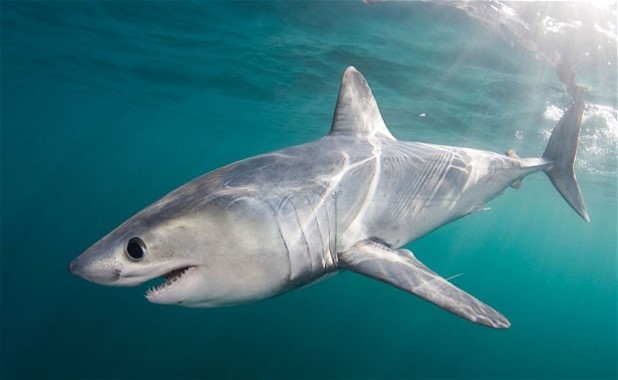 Porbeagle sharks (Lamna nasus) are a lesser-known shark, but this species actually spends most of its life in Canadian waters, spanning a range from northern Newfoundland into the Gulf of St. Lawrence and down the East Coast. Like its oceanic shark cousins, porbeagles migrate long distances, heading to the Sargasso Sea to pup. Porbeagles are even known to travel across the Atlantic at times.
Porbeagle sharks (Lamna nasus) are a lesser-known shark, but this species actually spends most of its life in Canadian waters, spanning a range from northern Newfoundland into the Gulf of St. Lawrence and down the East Coast. Like its oceanic shark cousins, porbeagles migrate long distances, heading to the Sargasso Sea to pup. Porbeagles are even known to travel across the Atlantic at times.
Porbeagle sharks are caught as bycatch in several of Canada’s fisheries, including swordfish pelagic longline, groundfish bottom longline, and groundfish gillnet fisheries. Porbeagle were assessed as endangered by the COSEWIC in 2014, and have been waiting for formal protection under Canadian law in the years since. After many years of advocacy work by EAC members and others, Canada closed the directed fishery for porbeagles in 2013 and agreed to an international measure requiring all porbeagles caught alive to be released back in the ocean. Canadian fishers now catch and retain under 10 tonnes of porbeagle shark per year. However, under the current plan, porbeagle populations are not predicted to recover for at least 100 years.
Follow our friend, Hector the Blue Shark on Facebook and Twitter to stay up-to-date on our shark work.
The EAC at International Tables: ICCAT, NAFO, UN
The EAC at International Tables: ICCAT, NAFO, UN
The ocean is an interconnected system powered by winds, tides, and currents that move energy, marine organisms, and people around the globe. Decisions made about managing marine resources, mitigating climate change, and protecting ocean habitat directly affect the health of Canada’s oceans, aquatic animal and plant life, and the communities that depend on this resource. This is why we have been actively involved in this issue at an international level for more than a decade.
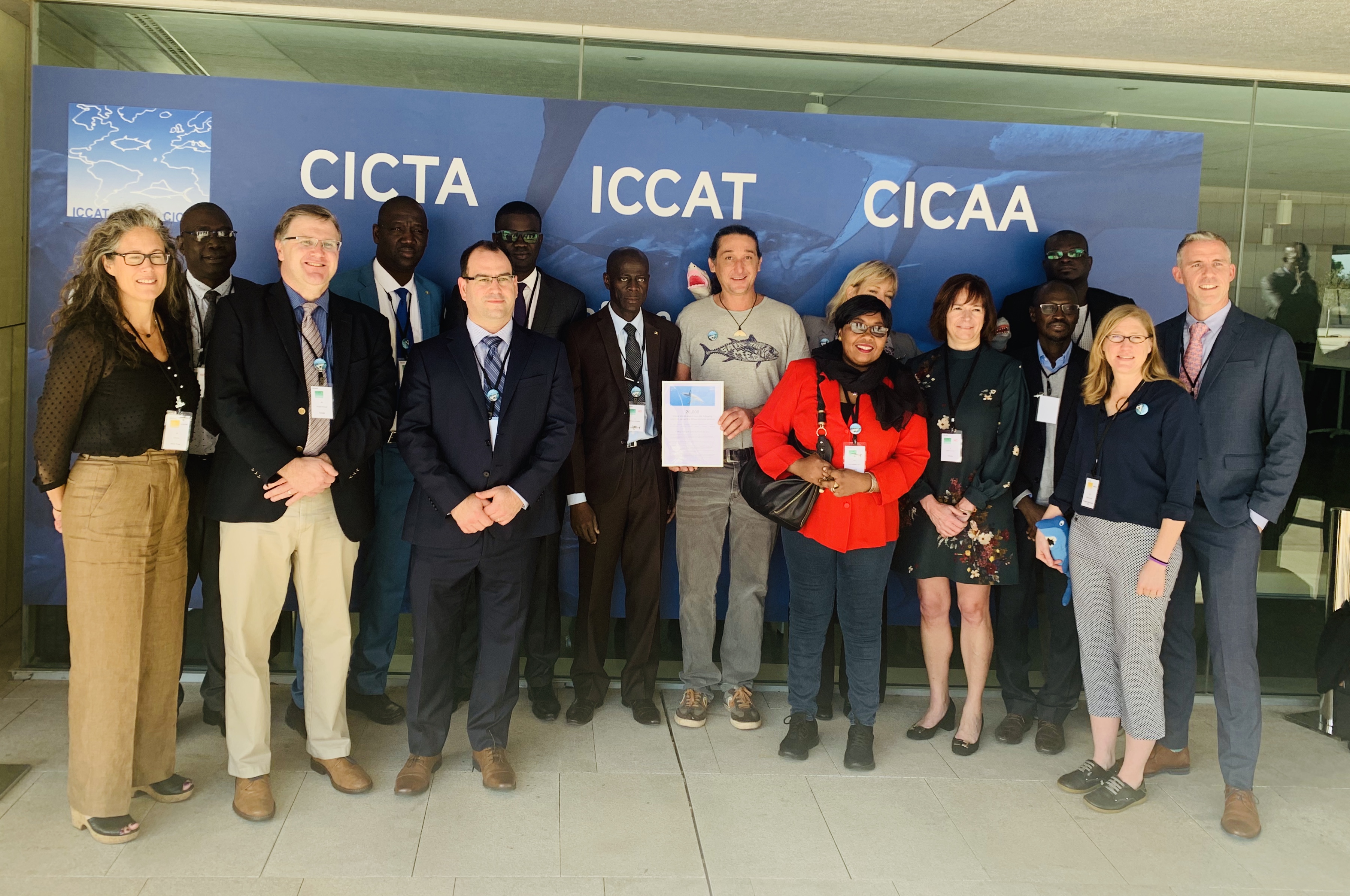
Shannon Arnold, Marine program lead, with international delegates at ICCAT negotiations
Regional fisheries management organizations (RFMOs)
EAC staff act as advisors to Canada’s negotiating delegation and in the capacity as official observers at two key international fishery management bodies: the International Commission for the Conservation of Atlantic Tunas (ICCAT) and the Northwest Atlantic Fisheries Organization (NAFO). These two bodies decide on the rules for fishing in the Atlantic Ocean.
ICCAT consists of 52 countries that fish in the Atlantic Ocean. ICCAT counties jointly agree on who gets to fish for swordfish, tunas, marlins, and sharks; how much each country is allowed to fish; the type of gear that can be used and, the rules that apply. The EAC advocates for science-based precautionary management, focusing especially on the species that are fished by Canadian fishing fleets. This includes bluefin tuna, bigeye tuna, swordfish, and sharks. We also advocate for proper protection for animals caught by these fleets while fishing, including loggerhead and leatherback sea turtles, marine mammals, and endangered sharks and rays.
NAFO consists of 15 countries that make the joint rules for bottom trawl and bottom longline fishing of shrimp, skates, and groundfish like cod, redfish, and halibut. These species migrate between Canada, the United States, Greenland, and beyond. NAFO sets the rules for commercial fishing in the Grand Banks of Newfoundland. This area was once bountiful and supported European fleets for centuries, and later Canadian fleets. Many of the stocks were so severely overfished that they are now closed or have very limited quotas. The EAC hosted the first deep-sea coral symposium in the world and successfully advocated for protection of deep-sea cold-water corals and seamounts in the NAFO area. Our work to extend protection continues with a focus on stronger management for all species and on advancing ecosystem-based fisheries management.
International coalitions
Our goal of advancing positive change in ocean management and protection has meant becoming involved in global partnerships. The High Seas Alliance and the Deep Sea Conservation Coalition are two examples of partnerships aimed at achieving a high seas treaty through the United Nations. These groups have pushed for a moratorium on deep-sea mining, and toward achieving a global agreement to end harmful subsidies for high-impact fisheries.
Swordfish: Keeping a Century-Old Fishery & Value-Adding
Swordfish: Keeping a Century Old Fishery & Value-Adding
For over 100 years, swordfish (Xiphias gladius) in Atlantic Canada have been caught by handheld harpoon. This is one of the cleanest and most skilled fisheries in the world. It was once a highly successful fishery. However, changing ocean conditions have made the swordfish increasingly hard to find. Fishers are leaving much of their small quota in the water, making it harder for this sustainable fishing method to be a viable economic endeavor. 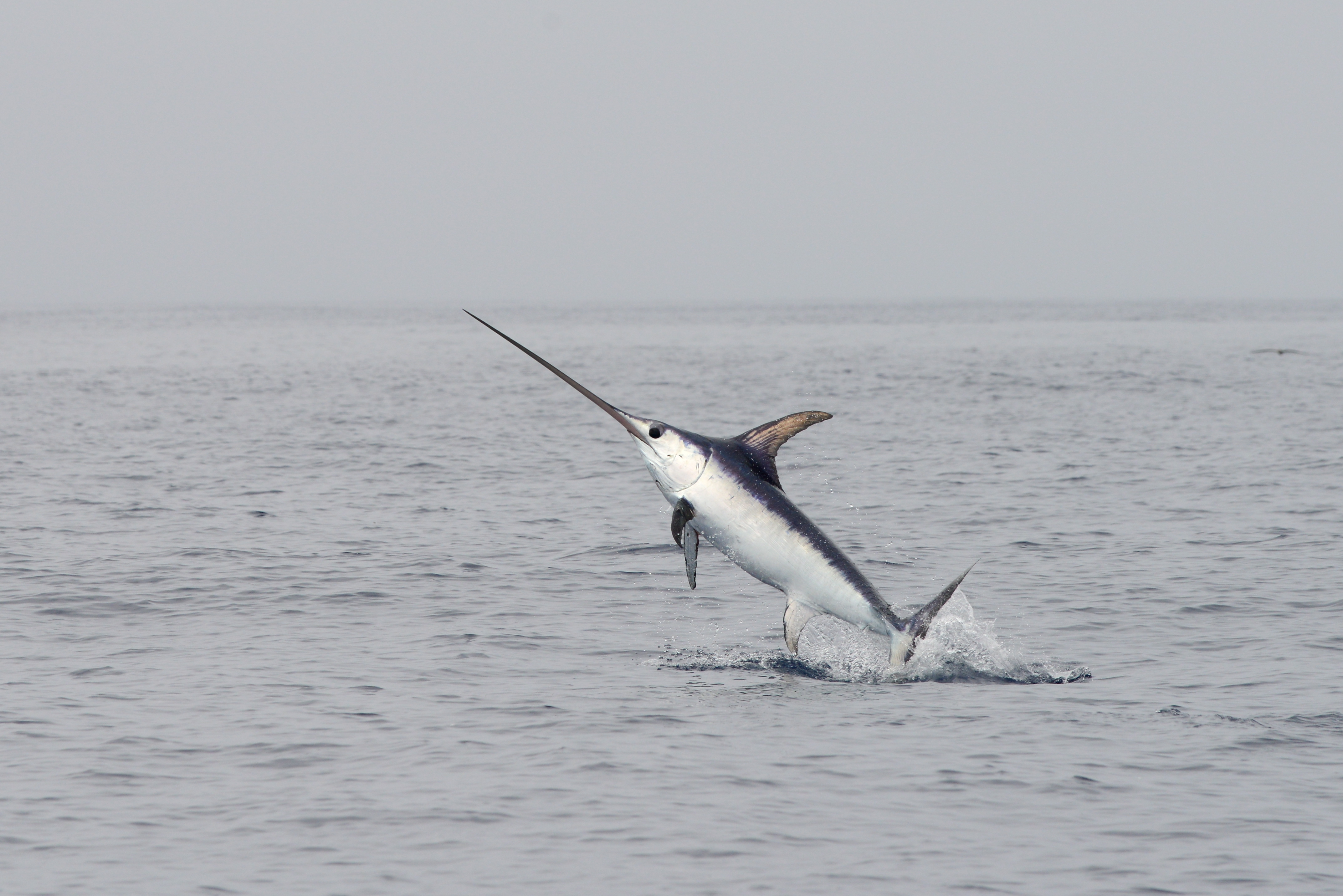
This issue is not new and is compounded by the fact that the only other fishery for swordfish in this region is done with the more efficient pelagic longline. This gear, which now gives some fishers access to most of Canada’s swordfish quota, uses lines stretching 30 to 50 kilometers in length with 1,500 to 3,000 baited hooks. Longlines catch not only swordfish and tuna, but also hundreds of endangered sharks, sea turtles and other species at the same time. We advocate for stronger rules to limit the impact of the longline fleet on threatened species. At the same time, we work to support the harpoon fleet’s continued access to quota and markets.
Back in 2000, we published Decline of the Cape Breton Swordfish Fishery: An Exploration of the Past and Recommendations for the Future of the Nova Scotia Fishery (Part 1 & Part 2), and after all these years we continue to raise many of the same concerns. With markets demanding cheap fish, and shifting environmental conditions changing the location of swordfish, the “less efficient” harpoon fleet continues to face pressure to shut down.
A Fishery in Flux
To adapt to these pressures and unpredictable conditions, this proactive fleet has proposed the addition of a new gear type to their licence, rod and reel gear, a selective and low impact gear method. This deep-water, single-hook and line gear option will help them access swordfish when harpooning them at the ocean surface is not possible.
Having the option to use either rod and reel or harpoon could also allow some fishers to offer paid sportfishing charter trips in the future. A charter operation, led by the licenced commercial fishers, would allow them to increase revenue by guiding paying sportfishers, add value to their catches while remaining within their allocated swordfish quota and, ultimately, help them stay in business. It would also provide tourists from around the world a thrilling, once in-a-lifetime experience: fishing for one of the most unique species in our region. We are working with the swordfish harpoon fleet to build the economic and scientific case for their proposed gear and charter ideas and to help navigate regulatory roadblocks.
Adapting for the Future
In 2024, we released our report Keeping a Century-Old Fishery Alive to showcase the work this fleet and the EAC have partnered on to overcome these barriers. Our report shows that there is positive support for charter operations across the fleet, which have the potential to add $2.5 million per year of value across the fleet with widespread participation. The report also sets out a series of key recommendations, including creating pathways to value-add to the fishery through a charter fishery. We do not want to see the loss of high-quality swordfish — a sustainable option, using a storied skill. a sustainable option, using a storied skill.
 We are also running a scientific trial of the rod and reel gear with the fleet to make sure it is clean and not catching unintended species and to ensure it is economically viable for targeting swordfish when harpooning is not possible. Trials have run each summer since 2022.
We are also running a scientific trial of the rod and reel gear with the fleet to make sure it is clean and not catching unintended species and to ensure it is economically viable for targeting swordfish when harpooning is not possible. Trials have run each summer since 2022.
In other parts of the Maritimes, live-release charter fishing for bluefin tuna was started to address very similar issues, providing a way of adding value to this fishery without putting additional pressure on the fish population. We explored the economic potential of expanding this opportunity to other coastal communities in our 2014 report Reeling In Revenue. The report showed that a revenue potential of $2.2 million is not being realized. The EAC continues to work with the swordfish fleet to showcase opportunities for adaptation and sustainable ocean livelihoods.
Redfish Bounty: Getting it Right
Redfish Bounty: Getting it Right
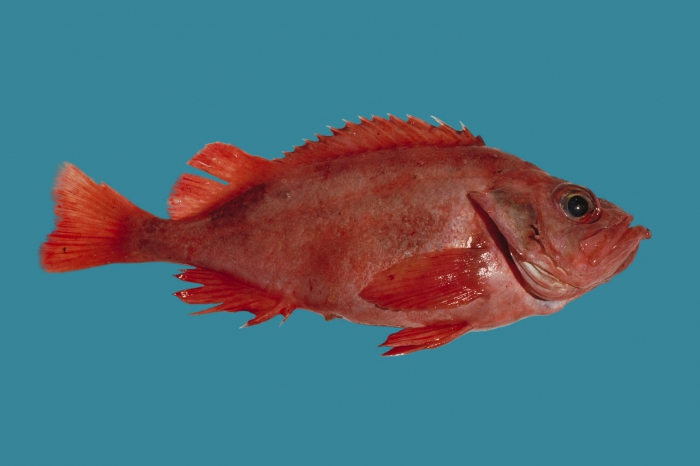
Photo credit: Fisheries and Oceans Canada, Heinz Wiele
Redfish (Sebastes spp.) are an important groundfish in the Gulf of St. Lawrence. A commercial redfish fishery was sustained in the area until 25 years ago when the stock became depleted and a moratorium was put in place. While many fish species remain at low abundances in the Gulf of St. Lawrence, deepwater redfish (Sebastes mentella) are now thriving, as they have recently and unexpectedly had a population boom. This has led to a scramble for access to this new fishing quota. We participate in the newly formed advisory committee for redfish management and work to understand the issues and economics at play. The EAC remains focused on building and advocating for a progressive management plan for redfish that includes social and ecosystem considerations, considers impacts on bycatch species that could act as “bottlenecks” on this fishery, and accounts for the likely scenario that this fishery might only remain open for a limited time.

